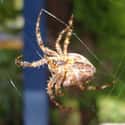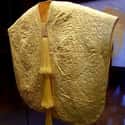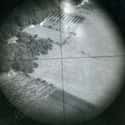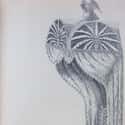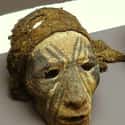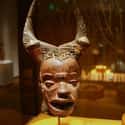-
(#1) Greek And Roman Bandages That Could Actually Help To Stop Bleeding
They may not have known the science behind what they were doing, but ancient Greeks and Romans learned very early on that spiderwebs make great bandages. There are three key reasons why: first, spider webs contain high amounts of vitamin K, which helps blood to clot. This meant that the webs would would stop bleeding faster. In addition, the webs of most spiders have antibacterial and antifungal properties, which helps with the healing process by preventing infection. Finally, spiderwebs will mesh with human skin as it heals, which also speeds up the healing process. Of course, an important caviat to all this is that it's important to use only the webs from non-poisonous spiders, particularly against open wounds. But with all of those benefits, it isn't surprising that people are looking to incorporate spider webs into more modern medical technology.
-
(#2) A Golden Silk Cape That Took More Than One Million Spiders To Produce
In 2009, two men created the largest known piece of fabric made of spider silk from Gold Orb Weavers. It took Simon Peers, an art history and textile expert, and his business partner Nicholas Godley more than one million spiders and half a decade to complete their mission. No spiders were killed in the cape-making process: instead, when the spiders had spun all the silk they had, they were released back into the wild. Spiders start producing silk again after about one week. The final product, an 11 by 4 foot piece of cloth, is considered to be the rarest type of fabric in the world.
-
(#3) Spiderweb Lures To Catch Unique Fish In The Solomon Islands
A traditional method of fishing in the Solomon Islands, off the East coast of Papua New Guinea, involves using a lure made of spiderwebs attached to a kite string. The fish they're looking for is a Needlefish, whose mouth and teeth are actually too small for a traditional fishing lure. The solution is a clump of spiderweb, hung from a kite to create a bobbing motion on the water. When the fish takes the bait, its mouth is stuck in the web and the fisherman can pull it in.
-
(#4) Telescopes With Spider Web Cross Hairs
In 1800s England, it was common practice to use spider silk as crosshairs for guns, telescopes, and other instruments of scientific observation. The threads were extremely thin, so they didn't get in the way of what the scientist was trying to observe. They also provided very accurate measurements, and could be used to form grids.
-
(#5) Spider Silk Bed Hangings Made By The French To Out-Do The Chinese
In 1898, a set of gorgeous spider silk bed hangings was put on display at the Paris Exposition. They were made by a monk named Father Jacob Paul Camboué and his business partner M. Nogué. Father Camboué was a French Jesuit missionary living in Madagascar, and they used the Golden Orb Weaver spiders that were common to the area (Camboué was also the fellow who invented a machine that could extract silk form 24 spiders at once). The goal was to prove that Europeans could produce silk as well as the Chinese and their silkworms could. Camboué's bed curtains were marvels, the first successful attempt at creating full pieces of fabric from spider silk. Sadly, they have been lost to time.
-
(#6) A Machine That Could Extract Silk From 24 Spiders Simultaneously
The man responsible for creating the first piece of cloth made from spider silk, Father Jacob Paul Camboué, also created a crafty way of extracting the spider's silk. The hand-made machine that he put together could pull the silk from 24 spiders at one time, without harming their delicate bodies. The spiders were all released after their silk ran out, and more spiders were caught to fill the machine again. The modern makers of spider silk fabrics use a machine based on this original model.
-
(#7) Violin Strings That Actually Sound More Melodic And Different Than, Say, Your Catgut Strings
Dr. Shigeyoshi Osaki, a Japanese researcher, managed to produce violin strings using spider silk in 2012. To form each string, he twisted together 3 strands made up of between 3,000 and 5,000 individual threads of silk. Violinists claim that the strings have a lovely, softer sound that is different than other tradition string materials. Dr. Osaki also used the Golden Orb Weavers' silk, and had to go through a precise calibration technique to test each strand's ability to withstand tension. He did his job well: the strings are sturdy enough to not break mid-song. It doesn't, however, make them any more viable for wider distribution.
-
(#8) Postcard-Sized Paintings Crafted On Spider Silk Canvases
During the 1500s in the Tyrolean Alps of Austria and Northern Italy, peasants and monks alike used to wander through the mountains looking for spiders and caterpillars to gather their webs. They then used the tiny thread to create incredibly delicate canvases layer by layer. The paintings on these canvases had to be done extremely carefully, with delicate brushes being used so as not to tear the fabric. The most delicate paintings were considered more highly valuable.
-
(#9) Fascinating Yet Historically Controversial Ceremonial Masks Of Ancient Vanuatu
In the island nation of Vanuatu, there are masks of ancient origin that the rest of the world has always struggled to understand. While some museums in the western world call them "death masks" or "smothering hoods," many historians believe that they were simply ceremonial, possibly used by secret societies. The masks are made using a base of matted spider silk, which was then covered in a layer of mud and fibers. They are decorated to look like faces, which could be somewhat intimidating.
-
(#10) Spider Silk Socks, Owned by King Louis XIV
In 1709, King Louis XIV of France was presented with a pair of spider silk socks by François Xavier Bon de Saint Hilaire. The socks had been painstakingly woven from egg sacks, as opposed to the already-woven webs. Like every other person who had tried to make items of clothing from spider silk, François Xavierlacked a sufficient supply of raw material. He later wrote to Britain's Royal Society, "The only difficulty now lies in procuring a sufficient quantity of Spiders Bags to make any considerable work of it."
-
(#11) Voice-Disguising Instruments For Communicating With Spirits
In Southern Nigeria, the Boki tribe found a unique use for spiderwebs. During the meetings of secret societies, bone tubes made from rams' leg bones were used to simulate spirit voices. Each tube would have an opening at one end with the other end covered with the spiderweb matting.
New Random Displays Display All By Ranking
About This Tool
Although many people have fear of these eight-legged insects, spider silk products have a peculiar and seductive appeal all over the world. Throughout history, spider silk has been used in a wide variety of ways and impressive. Some historical items are very creative in using humble spider webs, from fishing lures to violin strings, bandages to canvases. Spider silk is fragile and rare, items made from spider silks that are precious.
Here you can find 11 historical items that were made from spider silks, these fascinating items from the past may have been well-known far ahead of the time they were in. Nowadays, spider silk has been used in the fields of science, medicine, spirituality, and art.
Our data comes from Ranker, If you want to participate in the ranking of items displayed on this page, please click here.











